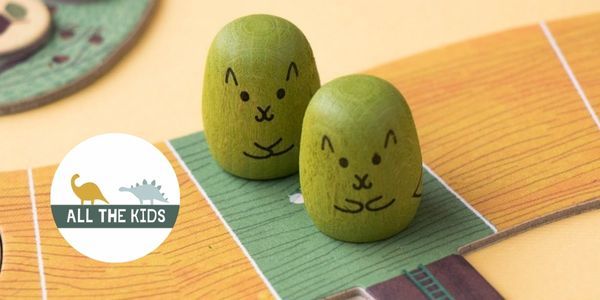

Developmental stages are funny old things aren’t they? As a parent, it’s absolutely amazing to see your offspring mastering new skills, exploring the world around them and growing into a slightly bigger tiny human. But does it really need to play out to a soundtrack of crying, screaming, whining and what in our house can only be described as pterodactyl-like screeching? My poor ears!
Hands up who has a toddler that has discovered their vocal range and wants you, the next town and astronauts on the moon to know about it? You have my sincerest sympathy. In recent months, myself and fellow content editor, Katie, have found ourselves comparing notes on the deafening noise levels . You could say we’ve learnt a thing or two about how to deal with the screeching stage.
Today I’ll be passing on our tips for living a slightly quieter life. We’ve also called in an expert in the form of Psychotherapeutic Counsellor, Chanelle Sowden, who specialises in child psychology and development. Here’s what you need to know…
Prompting Transitions Can Prevent Meltdowns
A toddler’s concept of the world and their priorities are understandably different from our own as parents. Still, it’s easy to forget how much so until you do something simple, like try and leave the park or ask them to put their coat on. One of the things that helps us to get where we need to be, roughly when we need to be there – is giving my little girl plenty of time to adjust. This means letting her know we’ll be changing activities soon and prompting or counting down to activity changes.
It’s not fool proof, but there’s a lot less screaming when we say things like “Soon we’ll be leaving the park and going to the shop to choose something for tea.” Followed by: “In ten minutes we will go to the shop. Would you like to help me choose what we have for tea?” Then “we will be walking to the shop to buy tea in five minutes, would you like to go on the swing again before we leave?”
Why Do Toddlers Turn Up the Volume?
Not all screeching is tantrum related. In fact, as my little girl circles the living room, flapping her arms and shrieking, it’s clear that she’s very much enjoying herself. She’ll break it up a bit with a few verses of Old MacDonald. Then maybe a bit of barking and pretending to be a dog too. I know it’s all part of her testing out her voice box and being excited about all the things she can do. That doesn’t make it any easier on the ears though.
Some things that sometimes help when my head is thumping are:
- Distracting her with questions or other activities
- Singing with her because singing is nicer than shrieking
- Asking her to use an ‘indoor voice’ or to try out other quiet animal noises – a mouse, a kitten…you get the idea.
Why Does My Toddler Screech Instead of Talk?
What’s infinitely more frustrating for us both is when my toddler uses only noises to communicate. She’s been talking since just before one year but it’s like she’s stopped trying sometimes. I was struggling to understand why, other than being overwhelmed by emotion or unable to articulate her thoughts and feelings. Luckily, Psychotherapeutic Counsellor, Chanelle Sowden was able to offer some insight.
I asked her why toddlers go from trying so hard to talk to at times reverting back to screeching and crying. She reassured me that regression is “a natural part of long-term growth”. Chanelle explained that it can be tricky for toddlers to stay focussed and committed to a difficult task or learning and using words at the same time. So frustrations and screaming often surface when there’s a lot going on. Or “if a child is tired or becomes dysregulated,” she says.
What really struck a chord with me was Chanelle pointing out that how I respond to my daughter when she’s making a request makes a difference. I’m very guilty of heavily multi-tasking and asking her to wait. I might say “Mama is busy right now but will be with you in one second”. As Chanelle points out: “If a child experiences too often that a calm request goes unnoticed, but a loud screech gets a response straight away, the child will understandably choose the latter.”
There’s no easy fix for this as sometimes we are just busy – as parents, we pack a lot in. However, I try to be mindful of what my little girl might need before I start something. I get her a drink or snack, set her up with an activity, or I involve her in what I can. We recently invested in a kitchen step for her so she can watch what I’m doing. She loves to watch and help in the kitchen and things have gotten a lot quieter.
Tantrums Happen to Everyone
One of our most popular Bump posts is the anonymous poem ‘I’m two, but I’m not terrible! If you’ve not read it yet, I urge you to after this post. It always puts things back into perspective for me. It made me feel better when my daughter had a meltdown at the front of the restaurant where my partner had just become manager. The reason? She didn’t want to put her coat on but it was raining outside. Trying to understand why my daughter is screeching, helps me to parent in an empathetic way. It also stops attacks of the guilts and quietens thoughts like “What have I done wrong?”
I have to do stuff I don’t like too, only at my age I’m better at understanding why. Plus, I can usually regulate my response to it. Going back to the restaurant situation, it was a whole new place, my little one was tired and probably a bit overwhelmed.
Chanelle explains: “If a toddler wants something, has tummy pain, feels like they’re missing out or gets a sense of enthusiasm, at this stage, they have very few ways of meeting these needs. Crying is mastered from birth, screeching is a learnt skill that tends to be very effective for getting noticed. Both are an invitation for you to connect with your child in some way. Some of these invitations just require a knowing moment of eye contact or a quick hold.”
Of course, having a quick cuddle to soothe your child is not the easiest thing to do mid meltdown. And it’s hard not to get frustrated! So, what should we do?
Stopping A Meltdown From Descending Into Chaos
“The number one most helpful point is to not join your child in their chaos, meltdown or tantrum,” Chanelle tells me.
“A child’s brain development means that they cannot contain, regulate or soothe themselves, they need a carer to do this for them. Their ability to self-soothe is born from us doing for them hundreds and hundreds of times first.”
It’s our job to guide them through the storm so to speak and to do this. Chanelle suggests staying as calm as possible and ‘labelling their feelings accurately”. This is because it’s “crucial for them to understand what they’re feeling and learn to describe it themselves,” says Chanelle. So by modelling calm behaviour, we help them to manage stress. From experience, I know this is al sometimes easier said than done in the moment. I often find I need to step away for a second and take a deep breath before I try and model calm behaviour and reiterate boundaries like not hitting.
The Calm After The Storm
The screeching stage is most definitely a tiring one – for both toddlers and their mummies. It’s one I think impacts children differently but seems to be something even the most articulate of kids go through. Right now, I’m learning alongside Alex and finding little things that help us both along the way. Seeing her face light up as she bounces into her seventh chorus of Old MacDonald definitely helps. What also helps is enjoying ten to twenty minutes lying next to her. I listen to the relaxing rhythm of her breathing after she’s drifted off to sleep. It’s quiet, dark and utter bliss!


.jpg)

.jpg)
.jpg)

.jpg)

.jpg)

